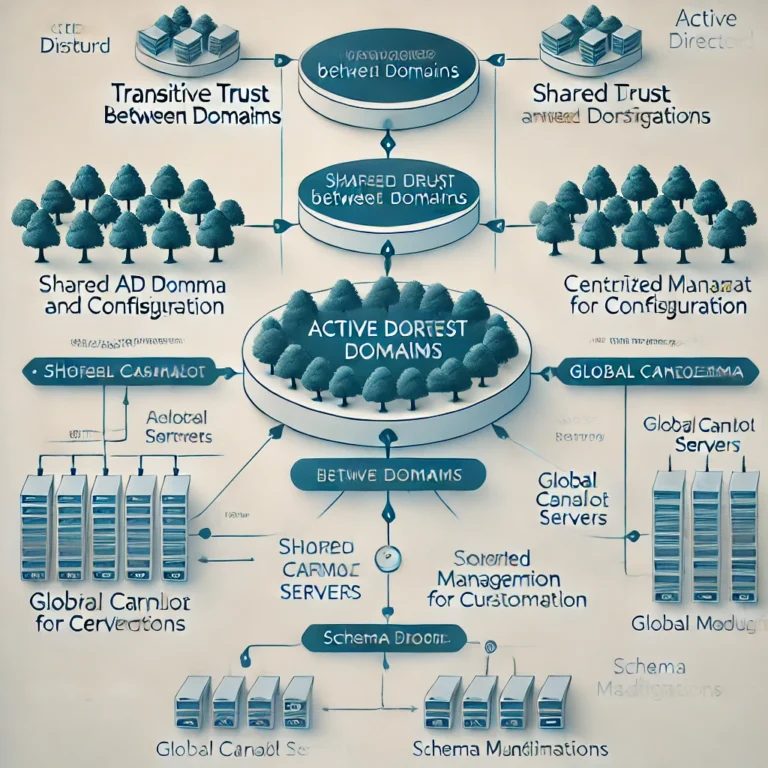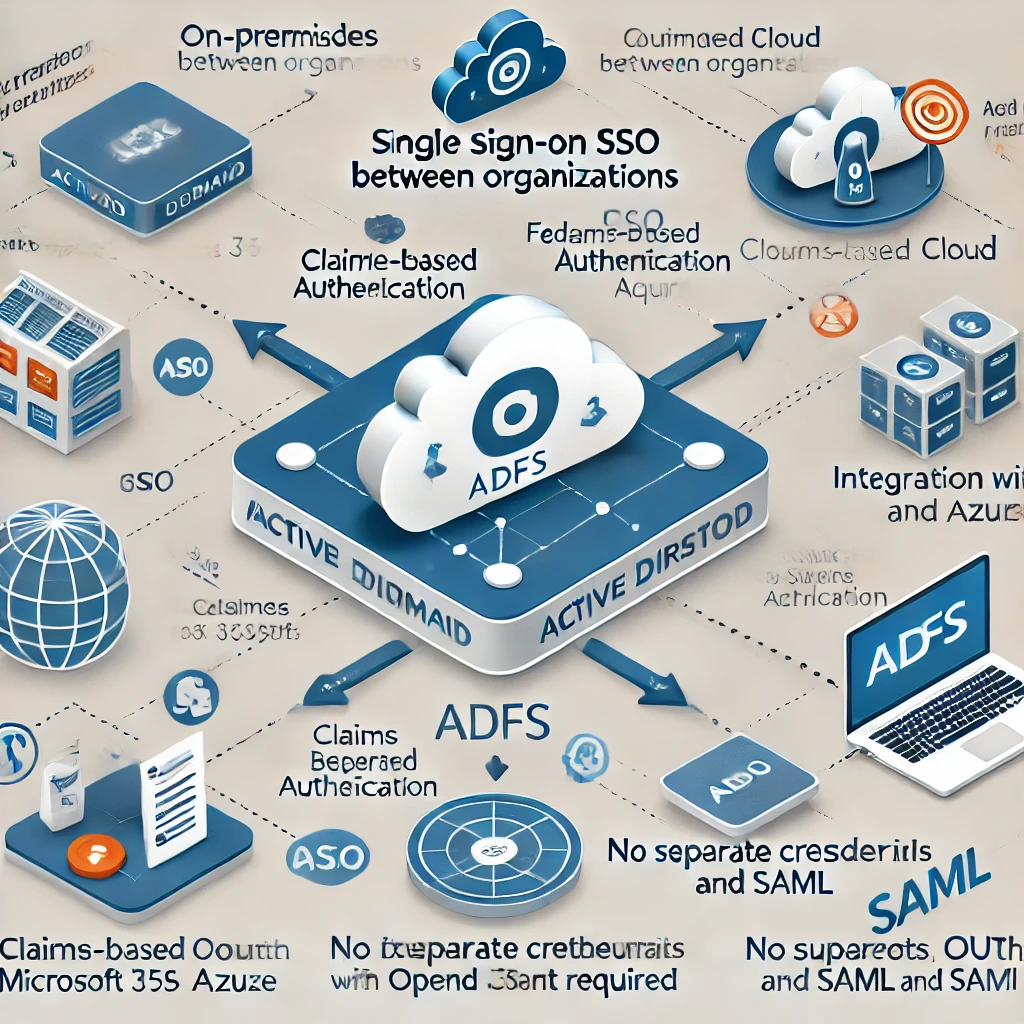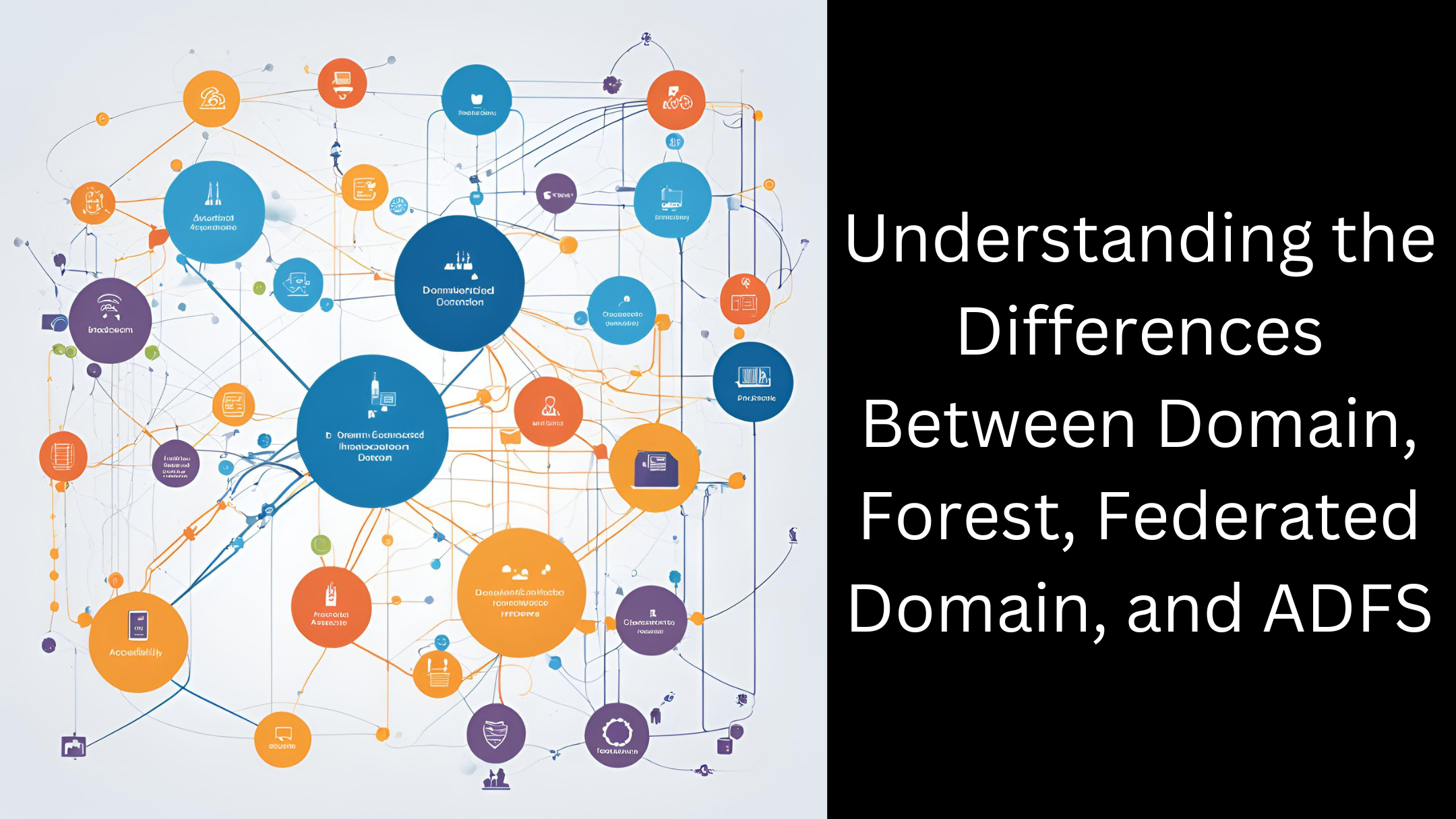When dealing with enterprise-level IT infrastructure and authentication, it is crucial to understand concepts like Domain, Forest, Federated Domain, and Active Directory Federation Services (ADFS). These terms often come up when managing identity and access across an organization’s network. In this blog post, we will break down the differences and relationships between them.
What is a Domain?

A Domain is a fundamental component of Active Directory (AD), which is a Microsoft directory service. A domain is a collection of objects such as users, computers, and groups that share a common authentication database and security policies.
Key Features of a Domain:
-
Centralized authentication and management of user accounts.
-
Defined by a Domain Name System (DNS) name, such as
example.com. -
Users within the domain authenticate through Active Directory Domain Services (AD DS).
-
Typically used within a single organization to manage internal network resources.
-
Supports Group Policy for managing security settings.
-
Uses Kerberos and NTLM authentication protocols.
What is a Forest?

A Forest is a collection of one or more Domains that share a common schema, configuration, and global catalog in Active Directory.
Key Features of a Forest:
-
The first domain created in a forest is called the forest root domain.
-
Domains in a forest trust each other by default via transitive trust.
-
Multiple domains within a forest share the same Active Directory schema and configuration.
-
Allows large organizations to manage multiple domains under a single administrative umbrella.
-
Includes Global Catalog Servers for faster searches.
-
Enables schema modifications for directory customization.
What is a Federated Domain?

A Federated Domain is an extension of an on-premises domain that allows authentication to be trusted across different organizations or services without requiring users to reauthenticate separately.
Key Features of a Federated Domain:
-
Uses Federation Services (such as ADFS) to authenticate users across multiple environments.
-
Enables Single Sign-On (SSO) between organizations and cloud services.
-
Does not require users to maintain separate credentials for external applications or partners.
-
Ideal for organizations that need to integrate on-premises authentication with cloud-based services like Microsoft 365, Azure, or third-party SaaS applications.
-
Uses claims-based authentication for security.
-
Supports OAuth, OpenID Connect, and SAML for authentication.
What is ADFS (Active Directory Federation Services)?
Active Directory Federation Services (ADFS) is a Microsoft identity solution that enables Single Sign-On (SSO) by federating authentication between on-premises Active Directory and external applications or services.
Key Features of ADFS:
-
Uses Security Assertion Markup Language (SAML), OAuth, or OpenID Connect for authentication.
-
Enables cross-organization authentication without sharing actual passwords.
-
Provides Multi-Factor Authentication (MFA) and conditional access policies.
-
Used to integrate with Microsoft 365, Salesforce, Google Workspace, and other external platforms.
-
Supports Web Application Proxy (WAP) for secure remote access.
-
Allows custom claim rules for enhanced security.
Differences at a Glance
| Feature | Domain | Forest | Federated Domain | ADFS |
|---|---|---|---|---|
| Definition | A logical group of computers/users under the same AD management | A collection of domains that share a schema and global catalog | A domain that is linked to external services for authentication | A service that provides authentication federation |
| Authentication | Local authentication within the AD domain | Authentication across multiple domains | External authentication trust between different organizations/services | Enables federated authentication using SAML, OAuth, etc. |
| Trust Relationship | Exists within the domain | Domains within the forest have implicit trust | Trust is established with external domains/services | No direct trust, but provides authentication federation |
| Common Use Cases | Internal network identity management | Managing multiple domains within an organization | Enabling SSO between on-premises AD and cloud applications | Providing external authentication to cloud and SaaS applications |
Conclusion
Understanding the differences between Domain, Forest, Federated Domain, and ADFS is essential for designing and managing authentication systems within an enterprise. While Domains and Forests help structure Active Directory, Federated Domains and ADFS facilitate authentication across multiple environments, enabling seamless integration between on-premises and cloud-based solutions.
For organizations adopting cloud services like Microsoft 365 or AWS, Federated Domains and ADFS play a crucial role in securing access and providing a smooth user experience with Single Sign-On (SSO). Keywords: Active Directory, Domain Controller, Forest Trust, ADFS Authentication, Federated Identity, Cloud Authentication, Security Policies, Group Policy, Microsoft 365, Azure AD, Single Sign-On, SAML, OAuth, OpenID Connect, Multi-Factor Authentication, Identity Management, Directory Services, NTLM, Kerberos, DNS, Global Catalog, Web Application Proxy, Schema, Conditional Access, SaaS Integration, Cross-Organization Authentication, Identity Federation, Authentication Protocols, On-Premises Authentication, Enterprise Security.













Leave a Reply